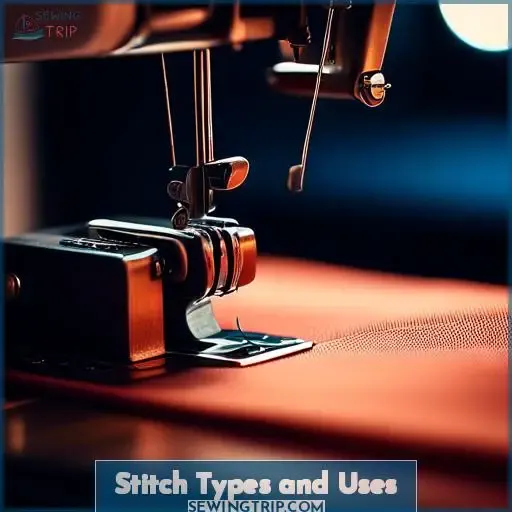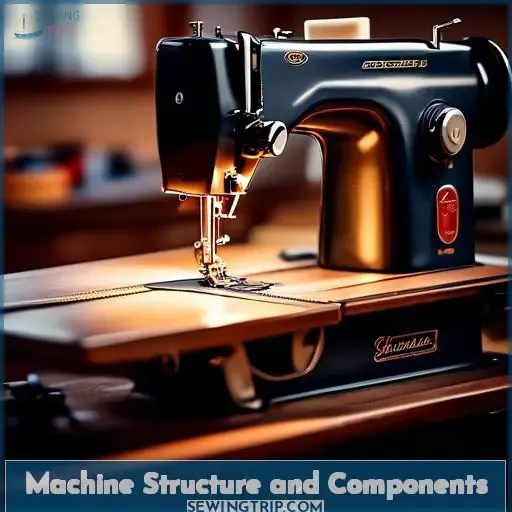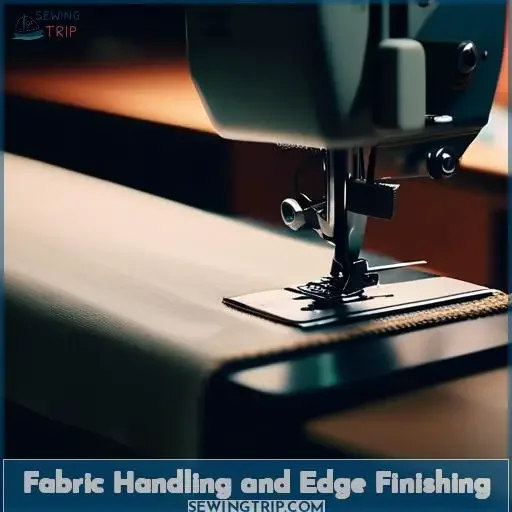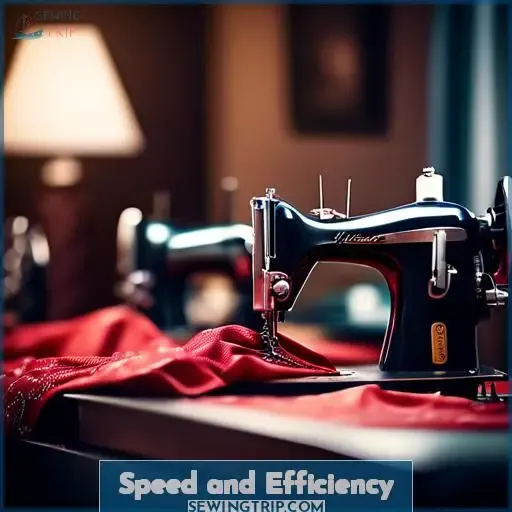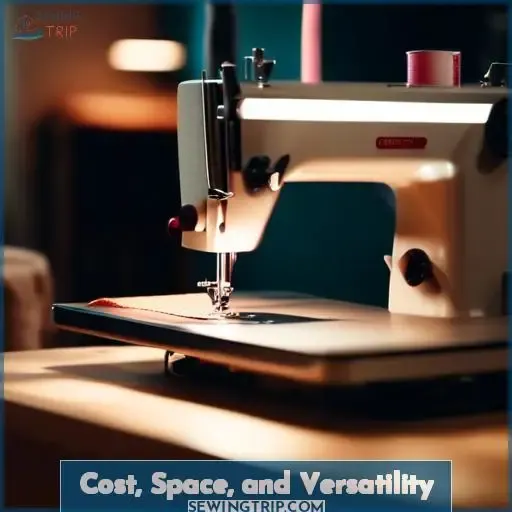This site is supported by our readers. We may earn a commission, at no cost to you, if you purchase through links.
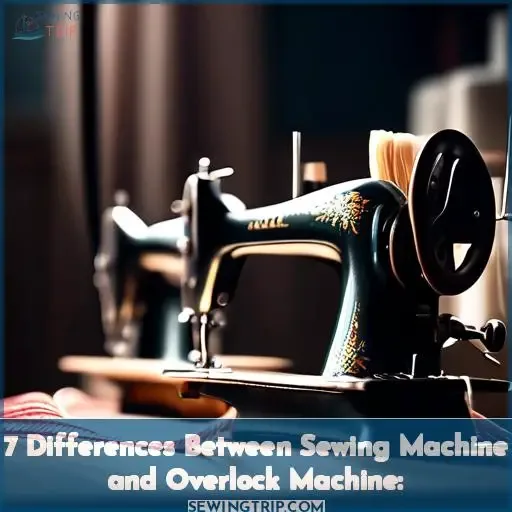
Stitch Types and Uses: Sewing machines can produce various stitch types, including straight, zig-zag, and embroidery patterns. Overlock machines, on the other hand, are designed to create an overlock stitch, which is more like knitting than sewing. This stitch trims and binds seams, making it ideal for construction and finishing tasks.
Machine Structure and Components: Sewing machines typically have a single thread path and operate at speeds up to 1,000 stitches per minute. Overlock machines, however, require at least four threads and operate at much faster speeds, often exceeding 1,500 stitches per minute. Overlock machines also have knives that cut seam allowances as they serge them.
Fabric Handling and Edge Finishing: Sewing machines are suitable for fabric assembly, while overlock machines are best for edge finishing. Overlock machines can create clean, neat edges that prevent fraying and reduce excess seam.
Speed and Efficiency: Overlock machines are generally faster than sewing machines, with some capable of performing over 1,500 stitches per minute.
Cost, Space, and Versatility: Sewing machines are more versatile and can be used for a wide range of sewing projects, while overlock machines are more specialized and may not be necessary until a sewer has gained some experience. Overlock machines can be more expensive and require more space than sewing machines.
In summary, while both sewing machines and overlock machines are essential tools for sewing, they serve different purposes. Sewing machines provide versatility for stitching patterns into fabric, while overlock machines are specialized for creating clean, professional edges and trimming seam allowances.
Table Of Contents
Key Takeaways
- Overlock machines are equipped with multiple thread paths and can operate at speeds exceeding 1,500 stitches per minute, while sewing machines typically have a single thread path and operate at speeds up to 1,000 stitches per minute.
- Sewing machines offer a variety of stitch types including straight, zig-zag, and embroidery patterns, whereas overlock machines specialize in the overlock stitch, which trims and binds seams to prevent fraying and reduce excess seam.
- While sewing machines are more versatile and suitable for a wide range of sewing projects, overlock machines are more specialized, making them less necessary for beginners and generally more expensive and space-consuming.
- Overlock machines are designed to handle fabric edges, providing clean and neat finishes, which is something sewing machines can do but not with the same level of efficiency or quality.
Stitch Types and Uses
Let’s explore the differences in stitch types and uses between a sewing machine and an overlock machine.
Sewing Machine Stitches
Sewing machine stitches play a crucial role in holding fabrics together with precise stitches, creating seam allowances that may fray. They include standard and elastic seams, 1-step buttonholes, and are compatible with various accessories.
The durability of a sewing machine isn’t significantly different from other domestic models, offering 23 stitches in total.
Overlock Machine Stitches
Transitioning from the basic stitches of a sewing machine, you’ll find the overlock machine, or serger, offers a different beast of precision.
With its ability to play with thread tension and differential feed, you can master seam finishes that are both durable and decorative.
Choose the right needle selection, and you’ll whip up safety, chain, and flatlock stitches that scream professional finesse.
Machine Structure and Components
Let’s explore the differences in the structures and components of sewing machines and overlock machines.
Sewing Machine Components
To understand the sewing machine components, it’s crucial to explore the role of feed dogs, presser foot, bobbin case, and the tension dial.
The feed dogs control fabric movement, while the presser foot guides the fabric.
The bobbin case holds the bobbin, and the tension dial adjusts the thread tension.
Additionally, consider the needle threader for easy threading.
These components, along with presser feet, are designed to enhance your sewing experience, whether you’re using a narrow or wide presser foot for different fabrics like knits.
Overlock Machine Components
Overlock machines, also known as sergers, are designed to handle a variety of tasks, from hemming and seaming to flat-locking and edging. They offer remarkable convenience for sewing professionals and enthusiasts alike.
An efficient industrial overlock or serger sewing machine can carry out a range of important tasks for different sewing applications. With the added feature of cutting the edges of a fabric as it’s fed through the machine, overlock or serger units not only create refined seams but also prevent fraying.
The components of an overlock machine are crucial for its functionality. Some common parts include the thread tension accessories, presser foot, and the machine itself. The thread tension accessories help maintain the proper tension of the thread, ensuring that the stitches are neat and even.
The presser foot keeps the fabric in place while sewing, ensuring that the stitches are straight and the blade can cut the fabric correctly. The machine itself, such as the Singer Heavy Duty 4423, is designed to handle thicker fabrics and long seams without breaking the bank.
Threading errors are common issues with overlock machines, but they can be resolved with proper techniques. For example, when dealing with unthreaded needles, it’s essential to make sure that the thread is threaded with a few inches of thread on the other side before starting to stitch.
CraftyMummy Tip: Using overlocker tweezers to pull the thread through at the back can also be helpful.
Overlock machines are versatile and can be used for a wide range of sewing projects. They’re particularly useful for managing seam allowances and creating clean, finished edges. If you’re in the market for overlock machines and their respective components, you can count on ABC Sewing Machine to offer a comprehensive and affordable selection of products.
Fabric Handling and Edge Finishing
When it comes to fabric handling and edge finishing, a sewing machine is designed for fabric assembly, while an overlock machine focuses on producing clean edges.
Sewing Machine for Fabric Assembly
When it comes to fabric assembly, a sewing machine is your go-to tool. Its stitches hold fabrics together securely, making it perfect for beginners and experienced sewists alike.
Sewing machines are generally easier to maintain and use less thread than an overlock machine.
If you’re just starting out, a sewing machine is the way to go for neatening raw fabric edges and assembling your garments.
Overlock Machine for Clean Edges
While a sewing machine is great for assembling fabrics, an overlock machine excels at creating clean, professional-looking edges. With its built-in cutting blade and ability to wrap threads around raw edges, an overlock machine prevents fraying and produces narrow, rolled hems – perfect for sewing knits and other stretchy fabrics.
Regular maintenance and troubleshooting are key to keeping your overlock machine running smoothly for all your edging and seaming needs.
Speed and Efficiency
You’ll notice that overlock machines typically operate at a higher speed than sewing machines, enhancing productivity for seam finishing. Sewing machines, while generally slower, offer precision and control for detailed work.
Sewing Machine Speed
In the realm of sewing machines, speed is a crucial factor to consider. A sewing machine’s speed is determined by the number of stitches per minute it can produce.
The Singer Heavy Duty 4423, for instance, boasts a speed of 1,100 stitches per minute. This speed comparison is essential when choosing between a sewing machine and an overlock machine.
The overlock machine, designed to handle various fabric types, offers adjustments like stitch length and thread tension to accommodate different material thicknesses. These features underpin the efficiency of an overlock machine, making it a robust choice for sewing projects.
Overlock Machine Efficiency
The overlock machine, also known as a serger, is designed to enhance the efficiency of your sewing projects.
With its ability to cut clean edges, wrap threads around raw edges, and prevent fraying, the overlock machine can save you time and effort.
The Singer Heavy Duty Serger, for instance, is a versatile tool that can sew knits with elastic seams and has a detachable waste basket.
While it may be more expensive than a sewing machine, the overlock machine is a worthwhile investment for seam allowance management and ever-evolving sewing projects.
Cost, Space, and Versatility
When comparing sewing machines and overlock machines, consider the initial investment required and the space each machine occupies. Additionally, explore the versatility each machine offers for different sewing projects.
Initial Investment and Operating Space
When considering the initial investment and operating space for a sewing machine versus an overlock machine like the Singer Heavy Duty, it’s crucial to weigh the initial cost and space requirements.
Sewing machines are generally more affordable and compact, making them suitable for beginners or those with limited space.
On the other hand, overlock machines may require more initial investment and operating space due to their specialized functions.
Versatility in Sewing Projects
When you’re juggling sewing projects, versatility is your ace in the hole.
A sewing machine lets you play with twin needle designs and buttonholing, while sergers are the kings of elastic seams.
Hunting for a rolled hem or a double-fold? The cover hem machine steps up.
Don’t forget, the right sewing tools turn durability evaluation from a chore into a triumph.
Conclusion
Delving into the realm of sewing tools, the article uncovers seven key distinctions between sewing machines and overlock machines.
Notably, overlock machines surge ahead with speeds exceeding 1,500 stitches per minute, emphasizing efficiency.
While sewing machines offer versatility, overlock machines excel in edge finishing and seam trimming.
Understanding these differences is crucial for sewing enthusiasts to choose the right tool for their projects.
Mastering the nuances between these two machines is essential for achieving professional results in your sewing endeavors.

